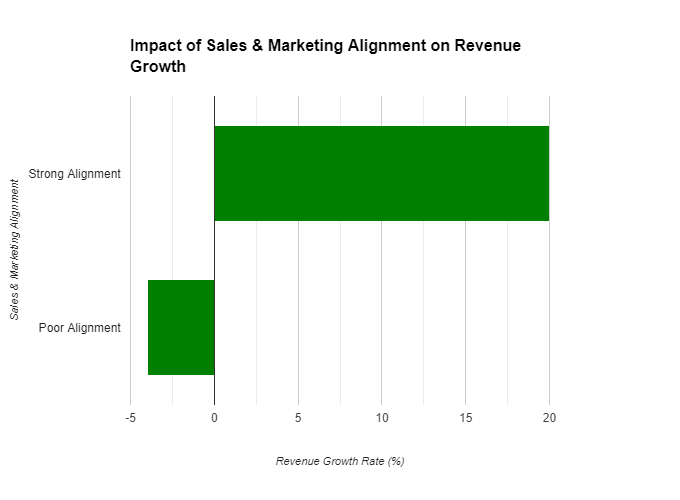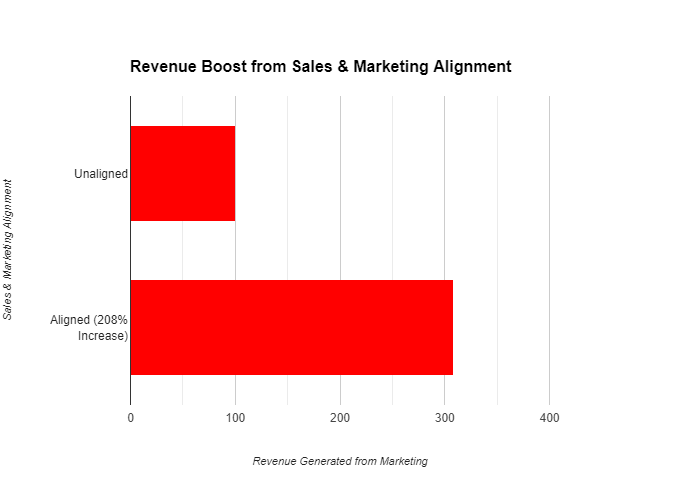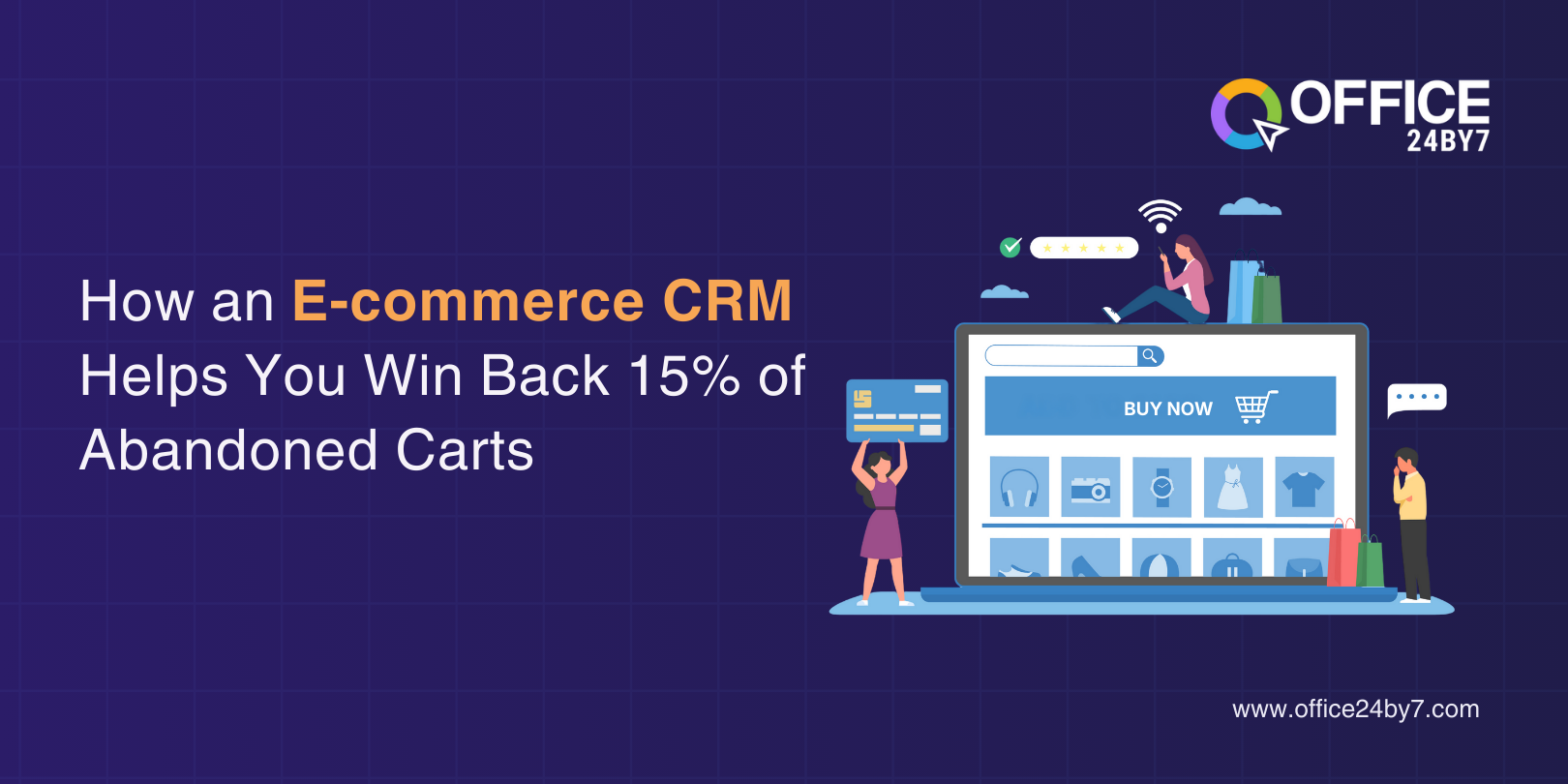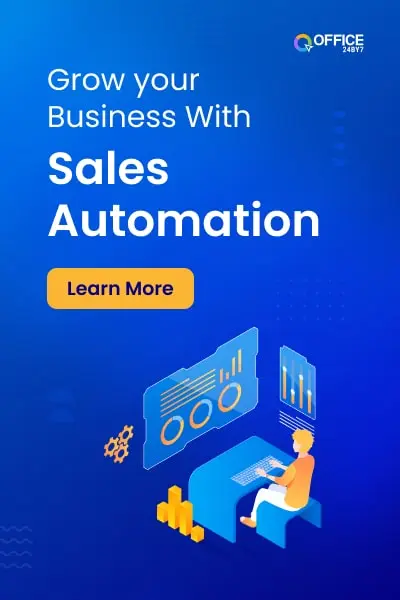
Not sure If this blog on lead quality would interest you?
Try our 1-minute short audio summary to decide. 🎧
What is a lead? Why are leads such a hot topic for argument? Why is it that from time immemorial, the sales and marketing team has constantly fought over this topic?
The sales team is the engine that drives revenue growth, while the marketing team acts as the fuel that keeps the engine running smoothly. However, one constant source of contention between these two departments is – you guessed it – leads.
Leads, are a seemingly simple concept, yet hold immense importance. They represent the lifeblood of any sales pipeline. Without a steady stream of qualified leads, the sales team struggles to meet quotas, ultimately impacting the company’s bottom line.
Marketers pour significant resources – budget, time, and innovative ideas – into generating a large pool of leads. However, the sales team might dismiss these leads as low-quality, often claiming that “90% of them are junk.” Why is it so?
Let’s run through a small narrative. Fancy a scenario? It’s a lovely rainy day, just perfect for a spot of relaxation. You’re perched on your balcony, a steaming mug of tea in hand, deciding to unwind with a browse on social media. As you scroll through Instagram, a sponsored ad for stylish dog leashes and collars grabs your attention. Intrigued, you give it a click and find yourself on the company’s website. There, a fantastic offer greets you: 40% off for new customers who simply sign up. In the heat of the moment, you pop in your name, phone number, and email, eager to bag the discount. But wait a tick – that impulsive purchase might not come to pass. All the while, behind the scenes, your details have been captured by the company’s CRM system.
From a marketer’s perspective, this scenario represents a lead captured. A lead signifies someone who has shown initial interest by clicking on the ad and submitting their information. This suggests you might be a potential customer.
However, salespeople see things differently. They categorize this as an unqualified lead. Here’s why: imagine the salesperson calls your provided number. After several rings, you pick up, only to reveal you have no dog and therefore, no interest in purchasing the product. This scenario highlights the wasted time and effort invested in unqualified leads. This is the valuable time that sales agents could have spent on outbound calls, follow-ups, or other productive tasks.


Understanding the nature of leads and how to identify high-quality ones is crucial for both marketing and sales teams. This knowledge can bridge the gap between their efforts and ensure a smoother lead conversion process.
Understanding the nature of leads and how to identify high-quality ones is crucial for both marketing and sales teams. This knowledge can bridge the gap between their efforts and ensure a smoother lead conversion process.
What is a Lead?
Leads represent potential customers who have expressed initial interest in a company’s product or service. This interest can be sparked through various touchpoints, collectively known as lead-generation sources. Some common examples include a company website, targeted landing pages, online advertisements, engaging social media content, informative online surveys, free educational courses, direct inquiries from potential customers, and email marketing campaigns.
Essentially, leads are individuals who have interacted with a company in a way that suggests they might be interested in purchasing in the future.
When a business acquires a lead, that potential customer enters the sales funnel. The lead management software helps track all the lead activities inside the sales funnel. Here, the sales and marketing teams collaborate to nurture the lead and convert them into a paying customer. This nurturing process guides them through the customer journey, transforming them from a prospect to a loyal advocate
However, a lead can drop out of the funnel at any stage. This underscores the importance of effective lead nurturing and qualifying by the sales and marketing teams. By providing valuable information and addressing their needs, they can qualify leads through the funnel and maximize their conversion potential. Otherwise, the time and effort invested in nurturing these leads will be wasted.
📖 You May Also Like: Lead Management Software: The Complete Businesses Guide
Different Types of Leads
In the world of sales, leads are like tiny seeds that hold the potential to blossom into sizable deals. They represent the initial spark of customer interest, and their careful nurturing is crucial for sales success. The sheer diversity of leads in the marketplace necessitates a strategic approach. To effectively convert them into paying customers, we need to classify them based on two key factors:
- Readiness to Purchase: This category focuses on how close the lead is to making a buying decision. Are they actively researching solutions, or are they still in the early stages of awareness?
- Level of Qualification: This aspect assesses how well the lead aligns with your ideal customer profile. Do they have the budget, authority, and need for your product or service?
By classifying leads under these two umbrellas, sales teams can tailor their approach to maximize conversion potential.
A. Level Readiness to Purchase
1. Cold Lead
A cold lead is a diamond in the rough. It refers to an individual or organization that hasn’t yet interacted with your company. However, they possess the characteristics and needs that perfectly align with your ideal customer profile. These leads exist within your target market but remain unaware of your brand or haven’t expressed any initial interest.
Converting cold leads requires persistence and a strategic approach. By identifying their potential pain points and demonstrating how your product or service can alleviate them, you can begin to nurture their interest. This nurturing process might involve targeted outreach, valuable content, and showcasing your brand’s expertise. Remember, patience is key – cold leads often require more time and effort to convert compared to warmer leads who have already expressed some level of interest.
2. Warm Lead
Warm leads are a marketer’s dream – potential customers who are aware of your company and have already shown some level of interest. These leads might involve following your social media channels, signing up for your email newsletter, or filling up some of your web forms. Even while they’ve expressed curiosity, they are still hesitant or confused about committing to a purchase.
The key to converting warm leads lies in nurturing their existing interest. This can be achieved through targeted marketing campaigns, personalized email campaigns, or providing valuable content that addresses their specific needs. By demonstrating the value proposition of your product or service for their concerns, you can bridge the gap between their initial interest and a final decision to buy.
3. Hot Lead
Hot leads are the golden tickets of the sales world. These are going to be your ‘confirmed kills’. These are potential customers who have expressed a strong interest in your product or service. They might take actions like requesting a demo, directly contacting your sales team, or explicitly indicating their purchase intent. Such leads are to be handled with immediate action from your sales team. Hot leads should be prioritized and promptly followed up on to capitalize on their enthusiasm.
B. Leads by Qualification
1. Marketing Qualified Lead (MQL)
Marketing Qualified Leads are comparable to warm leads. MQL refers to individuals or organizations who have come in contact with your marketing team’s efforts but are still not completely ready to make a purchase.
These interactions might involve downloading an ebook, registering for a webinar, or completing a form to receive a free consultation. By engaging with your marketing materials, MQLs have demonstrated a level of interest that warrants further nurturing.
2. Sales Qualified Lead (SQL)
A Sales Qualified Lead is a potential customer who has exhibited a strong interest in your product or service and is considered highly likely to make a purchase. These leads have progressed beyond simply interacting with marketing materials.
They might be actively downloading trial software, engaging with product demos, or inquiring about specific product features through online forms. These actions signal a clear buying intent, making them prime targets for your sales team’s efforts.
3. Product Qualified Lead (PQL)
Product Qualified Leads represent individuals or businesses who have gained firsthand experience with your product or service. This experience often comes through a free trial or using a limited feature version.
By actively engaging with your product, PQLs have demonstrated a level of interest that surpasses simply being aware of your brand. They’ve taken a step towards understanding the product’s value and its potential fit for their needs.
4. Service Qualified Lead
A Service Qualified Lead is an opportunity for upselling and cross-selling. They are existing customers of a business who have expressed interest in purchasing additional products or services from the same.
They could express their interest in additional purchases either directly through communication with your customer service team or by indicating their intent through specific actions within your platform. Identifying and nurturing such leads is crucial for fostering customer loyalty and driving long-term business growth.
🔥 You May Also Like: Lead Tracking for Marketers: The Complete Guide
How Can You Measure Lead Quality
One of the biggest hurdles companies face after launching lead generation campaigns is evaluating the quality of the leads they collect. Managing and scoring hundreds of leads can be a time-consuming and cumbersome process.
One of the most commonly seen issues faced by businesses after launching a lead generation campaign is the identification of quality leads. All your leads should be qualified to save valuable time and effort. When you qualify your leads you are better able to prioritize and focus to close your monthly or quarterly quotas.
To do this you can follow a process often followed by all sales teams called Leads Scoring.
Lead Scoring
Lead scoring can be simply called a system where you assign points to specific actions.
For example, when a customer visits your website you might provide leads with a score of 4 points. If he/she is in the targeted age group then you can add more points. The more the number of points that are qualifying, the more the scoring. Similarly, if the lead does not fall into a specific requirement you have you can deduct the points from it. When you are finally done with all your requirements for an ideal lead, you will have successfully scored your lead.
But how do you keep track of lead scores or hundreds of leads? Fortunately, businesses like Office24by7 help you track lead data easily and efficiently. The lead tracking software of the Office24by7 marketing automation module helps companies to understand these customer data and prioritize their sales efforts efficiently like any other composable CDP.
Office24by7 lead tracker allows for centralized data storage as well as additional valued services like omnichannel marketing communication, and integration with data sources, making it easy to identify and qualify potential customers.
What Defines a Quality Lead?
To qualify for a lead, you need to first establish a clear understanding of what you are expecting from your ideal quality lead. Let’s look at some characteristics that are most considered while defining the ideal quality of a lead.
1. Expressing Genuine Interest
The ideal quality lead is someone who should express genuine interest in your company and the products or services you offer. This interest could come in completely cold, where the lead contacts you out of the blue.
Said that this lead could also be someone who was attracted by a demo, advertising, or cold calling. These leads are the direct results of the marketing efforts. Such leads can be called quality leads.
Someone clicking on a Facebook ad and following it through to your landing page or website would also be a great example of a quality lead showing interest.
2. Fits Your Buyer Persona
The foundation for defining a quality lead lies in understanding your ideal customer profile. This profile acts as a blueprint, outlining the characteristics of your perfect customer. It encompasses various demographic factors like age, location, gender, and marital status, along with additional considerations like budget and industry.
By clearly defining your buyer profile, you can attract leads who are more likely to be a good fit for your products or services, ultimately improving lead quality. When you have a lead that fits into this buyer persona, that lead would have a higher chance of conversion or purchase and these leads can be called quality leads.
Let’s dig a little deeper into how to understand the buyer persona.
Consider a brand that is focused only on wedding jewelry. Even though any couple can come in for a purchase, for this company, their ideal and major buyer profile would be a couple who is about to get married. Let’s see why:
They have the intent to purchase: Couples embarking on their marital journey represent a significant target market for jewelry brands. These individuals seek not only engagement and wedding rings but also a way to express their commitment through a timeless symbol. This might involve traditional precious metals or an upgrade to a more distinctive diamond or gemstone.
Their desire for enduring quality extends beyond just the engagement and wedding bands, potentially encompassing other pieces within the same jewelry category. The high emotional investment in these purchases makes engaged couples a promising audience, with a significant likelihood (more than just 90%) of converting interest into a sale.
They have the product relevance: Beyond demographics, couples on the verge of marriage represent a prime target audience for this product. Their upcoming wedding imbues the product with heightened value, making them more receptive to marketing efforts.
They have an emotional connection: Engagement rings and wedding bands represent a significant investment, both financially and emotionally. These are symbols meant to last a lifetime, so potential buyers dedicate considerable time and resources to researching and selecting the perfect option. The emotional connection to this purchase fuels a heightened level of concern, ensuring a deliberate decision-making process.
While demographics like income and budget are important aspects of a buyer persona, they shouldn’t be the sole focus. Attracting leads who lack the financial means to purchase your product or service is a recipe for wasted effort. Even if a lead seemingly aligns with your ideal customer profile in every other way, an insufficient budget disqualifies them as a quality lead.
3. Customer Needs Match Your Offer
You can determine lead quality based on a customer’s pain points. If their needs match your offer, then you have a quality lead who deserves time and attention.
For example, if you’re selling bulk health club memberships to businesses, an office manager who just instituted a healthy living initiative needs your service. That makes them a quality lead.
A company with a health insurance contract already at hand with your competitor who is priced lower or equal to yours with similar kinds of resources won’t have a strong need for your offer. You can consider this lead as a low-quality lead.
4. Intend to Buy Soon
Purchase intent is a crucial factor for identifying high-quality leads. While some customers might express interest in buying, their purchase timeframe can significantly impact resource allocation. In commission-based industries especially, leads who are not ready to commit immediately can consume valuable sales time without a guaranteed return. By prioritizing leads with a strong purchase intent, sales teams can focus their efforts on those most likely to convert quickly, maximizing efficiency and profitability.
Let’s take the example of the Real estate sector. To qualify leads for real estate agents there are a few things to consider.
- Pre-qualifying leads is an essential step for optimizing the sales process. This involves assessing potential customers against defined criteria, such as budget and loan pre-approval (if applicable). By establishing these minimum requirements, you can efficiently filter out unqualified leads. This prevents wasting valuable sales time on customers who are not financially prepared to make a purchase, allowing your team to focus on nurturing high-potential leads with a greater chance of conversion.
- Beyond basic qualifications, a high-quality lead demonstrates active engagement in the market. For potential buyers, this translates to actively searching for properties, not passively postponing viewings or recommendations from your team. In the case of sellers, they should be actively available in the market now, not just considering a future sale sometime down the line. Focusing on leads who are actively engaged ensures you’re working with individuals who are truly ready to move forward, maximizing the success rate of your efforts.
- Leads should be matched with agents who possess the relevant expertise. A potential buyer seeking a residential property wouldn’t benefit from an agency specializing in commercial real estate. By ensuring leads are directed to agents with the appropriate skillset and experience, you can create a more efficient and productive experience for both parties.
5. Potential to Recur
While one-time purchases offer a temporary advantage, sustainable profitability hinges on cultivating loyal customers who make repeat purchases. Focusing solely on customers with a single purchase in mind can render your nurturing and support efforts less impactful. After all, these customers have the freedom to choose a competitor’s offering at any point. The key lies in fostering long-term value – building relationships that encourage repeat business and a higher customer lifetime value.
By prioritizing customers who hold the potential to become repeat buyers and loyal advocates, you’ll cultivate a strong and secure foundation for your business’s future.
Easy Qualifying Frameworks To Help You
Here are four frameworks that can help you qualify your leads. Ask yourself each of these questions and if the lead satisfies all the questions in a framework then the lead is good to go.
BANT (Budget, Authority, Need, Timing):
- Budget: Does the lead have enough budget to make the purchase?
- Authority: Does the lead have decision-making power? If not, do they have the power to influencers the purchasing process?
- Need: Does the lead genuinely need your product to solve their requirement?
- Timing: Will the lead purchase in a reasonable timeframe?
CHAMP (Challenges, Authority, Money, Prioritisation):
- Challenges: What are the challenges faced by the lead?
- Authority: Does the lead have the decision-making power to make the purchase?
- Money: Does the lead have enough budget for your product or service?
- Prioritization: Is the lead committed to resolving their issue?
MEDDIC (Metrics, Economic Buyer, Decision Criteria, Decision Process, Identify Pain, Champion):
- Metrics: What impact can your product have on the lead’s business?
- Economic buyer: Who is the ultimate purchasing authority?
- Decision criteria: What are their decision-making criteria?
- Decision process: What is the lead’s decision-making process?
- Identify pain: What are the lead’s pain points and challenges?
- Champion: Who in the lead’s organization can be an advocate?
GPCTBA/C&I (Goals, Plans, Challenges, Timeline, Budget, Authority/Negative Consequences & Positive Implications):
- Goals: What are the lead’s goals and objectives?
- Plans: What are the lead’s current plans for achieving those goals?
- Challenges: What obstacles exist that prevent the lead from achieving their goals?
- Timeline: What is the lead’s timeline for addressing their challenges?
- Budget: Does the lead have the financial capacity to invest in your solution?
- Authority: Who are the decision-makers involved in the purchasing process?
- Negative consequences: What are the negative consequences of not addressing the lead’s challenges?
- Positive implications: What are the positive outcomes of solving the lead’s challenges?
Conclusion
Bigger isn’t always better! While a vast pool of leads might seem appealing, the true key to success lies in quality, not just quantity. Focusing solely on generating a high volume of leads can bring in a large number of unqualified prospects who have little interest in your product or service.
The key to great marketing is attracting individuals who are actively seeking solutions. By prioritizing leads who demonstrate genuine interest, you’re casting your net in the right waters. This means aligning your marketing efforts with well-defined buyer personas – detailed profiles of your ideal customers. Targeting those who share similar characteristics and needs as your ideal customers ensures you’re reaching a receptive audience.
Furthermore, focusing on quality allows you to craft more targeted marketing campaigns. You can tailor your message to resonate with the specific pain points and aspirations of your ideal customer. This personalized approach fosters deeper connections and establishes you as a trusted advisor, not just another salesperson.
Ultimately, high-quality leads are more likely to convert into paying customers and, more importantly, loyal repeat buyers. By prioritizing quality over quantity, you’ll cultivate a strong customer base that drives long-term profitability and fosters lasting relationships – the true recipe for marketing success.





